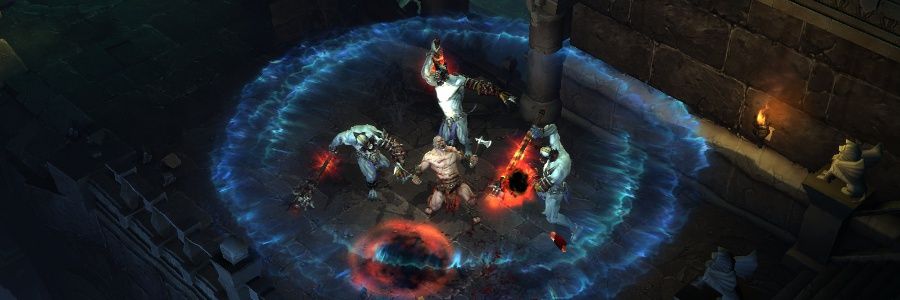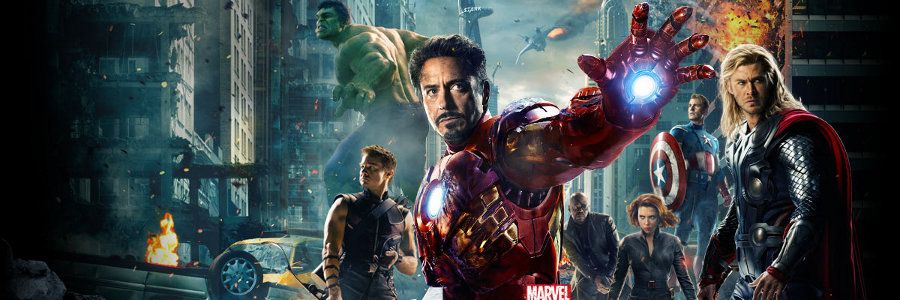 Welcome back to another edition of Answers From the Vault. You may recall that last week I canvassed the vast Vault community for questions, queries and general mysteries of the comic book world, all in the name of providing you with the most kick-ass clump of knowledge ever to be dumped in your grill. After receiving over ten trillion questions, though, I narrowed it down to just two worthy of answering. So without further ado, let's all embiggen our brains and get some fresh Answers From the Vault.
Welcome back to another edition of Answers From the Vault. You may recall that last week I canvassed the vast Vault community for questions, queries and general mysteries of the comic book world, all in the name of providing you with the most kick-ass clump of knowledge ever to be dumped in your grill. After receiving over ten trillion questions, though, I narrowed it down to just two worthy of answering. So without further ado, let's all embiggen our brains and get some fresh Answers From the Vault.Can you think of a creative team's run that would have worked better if attached to another project? For instance, I liked Karl Kesel's Daredevil run, but it might have been better as a Spider-Man run. Erik Larsen's Defenders run was pretty bad, but might have worked better if he was doing it attached to the revamped Heroes for Hire book. And actually, come to think of it, that HfH run (was it an Ostrander book?) would probably have worked better in the Defenders. -- Mark
Thanks for the question Mark. The answer is no, I can't think of any. Next question!
No, just kidding. The funny thing these days is that mainstream superhero comics have become so self-referential that a lot of writers seem to be writing archetypes more than actual characters. Maybe that's just the influence of Alan Moore and Watchmen, but because of this, there are a lot of books that could pretty much have the characters completely swapped without any real effect on the stories at all. And that's not even getting into characters that are specifically created as proxies for other characters, such as Planetary.
Plus, with DC's New 52 and the constant shakeups at Marvel, characters are being reinvented so frequently that it's hard to really figure out what stories make sense for a character anymore anyway. For instance, in terms of traditional Marvel, there's no question that Bendis' New Avengers would have made more sense as a Defenders series, specifically post-Civil War. At that point the team was underground, doing either street level stuff or combating secret menaces the rest of the superhero community was ignoring, with a roster comprised of Wolverine, Spider-Man, Luke Cage, Iron Fist, Dr. Strange and Hawkeye. That's the Defenders, people, even if it has an Avengers logo on the front in order to boost sales.
But having said all that, I'll say that while I absolutely love Ed Brubaker's Captain America, it really reads more like a modern day SHIELD series than a traditional Cap superhero story. I can't say it would have worked better as a SHIELD story per se, since it worked so darn well as it was, but it would arguably have worked about the same if the lead was Nick Fury instead of Cap.
What are the 5 Worst Resurrections in comics? I would have to think Aunt May's return would have to top the list. Is there a worse one? -- David Wright
Thanks for the question, David. At this point, death is essentially meaningless in mainstream superhero comics, to the point where it's pretty hard to narrow it down. Off the top of my head, though, here are a few really egregious examples, including Aunt May:
1. Aunt May -- Officially killed the concept of development in comics, specifically in the Spideyverse. Good buy character progress, hello neverending stasis.
2. Captain Marvel -- This gets a special mention, because his return fromt he dead was retconned away before they even explained it. During Civil War, Captain Marvel showed up, suddenly alive again even though The Death of Captain Marvel is one of the most famous, acclaimed and beloved comics of all time. But no matter, even that can't stand up to the fact that Marvel has to publish a comic called Captain Marvel every so often to retain their trademark. so they came up with this asinine story where Captain Marvel was transported forward through time from before the moment of his death, meaning he was now alive in the present only knowing he would eventually have to go back and die.
The worst thing about this, though, was after hyping this up as some kind of giant event -- Mar-Vell is back!!! -- and publishing a one-shot to return him from the grave, a couple months later they just said, "oh, that was a skrull. Just kidding." It was hands down the most blatantly manipulative scam Marvel's ever run, because they knew in advance that this story wasn't his return at all, but they hyped it up anyway to sell a bunch of comics. Just a complete fraud perpetrated on the comics community. An all-time low point for Marvel. The comic itself sucked, the idea sucked, the reasons for publishing it sucked and the liars and con men who called themselves Marvel's editorial staff sucked most of all. What a joke.
3. The Green Goblin -- Hey, there goes three decades of continuity out the window. Because Spidey doesn't have any other good villains they could use instead, right?
4. Mockingbird -- Okay, this is maybe just me. But Bendis spent years putting Hawkeye through the ringing, killing him off, resurrecting him in an alternate universe, leaving him somewhat morose and dealing with existential angst. It's not where I would go with the character, but it at least opened the door for some new character development. And then, after all that set-up, instead of exploring any of that they instead brought back Mockingbird in Secret Invasion so they could try and revert to a mid-80's status quo that nobody was a fan of anyway! Except for one guy who happened to be a writer at Marvel. It's just asinine.
5. Barry Allen -- See above. Don't get me wrong, I like Barry, but he was dead for a quarter of a century and nobody under the age of 55 wanted him back. Wally West is one of the most popular and successful "replacement" superheroes in comics history and is still much more popular than Barry Allen. I have to think they did this because of some kind of future movie tie-in. But then again, the fact that they made such a big deal about this to the point of building entire crossover events around his return, only to scrap the entire DCU before the story was even finished, kind of shows how little direction anybody at DC has these days.
You'll note the absence of two characters from this list, namely Jean Grey and Bucky. I don't think Jean Grey should have been brought back form the dead and in many ways her return is the key moment where death stopped having any meaning in comics for all time. But I still have to give her a bit of a pass because she was, after all, the Phoenix. Returning form the dead is an inherent part of being the Phoenix. Bucky, on the other hand, gets a pass because the story has totally been worth it. I know, it surprised me too, but Winter Soldier has become one of my favorite Marvel characters and Burbaker continues to do great stories with him. And that's what it's all about after all.
























































